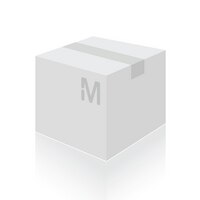625725 Sigma-AldrichPhosphoDetect™ Anti-TrkA (pTyr⁴⁹⁰) Rabbit pAb
This PhosphoDetect™ Anti-TrkA (pTyr⁴⁹⁰) Rabbit pAb is validated for use in Immunoblotting, Immunoprecipitation for the detection of TrkA (pTyr⁴⁹⁰).
More>> This PhosphoDetect™ Anti-TrkA (pTyr⁴⁹⁰) Rabbit pAb is validated for use in Immunoblotting, Immunoprecipitation for the detection of TrkA (pTyr⁴⁹⁰). Less<<Recommended Products
Overview
| Replacement Information |
|---|
Key Spec Table
| Host |
|---|
| Rb |
| Product Information | |
|---|---|
| Form | Liquid |
| Formulation | In 150 mM NaCl, 10 mM HEPES, 50% glycerol, pH 7.5. |
| Physicochemical Information |
|---|
| Dimensions |
|---|
| Materials Information |
|---|
| Toxicological Information |
|---|
| Safety Information according to GHS |
|---|
| Safety Information |
|---|
| Product Usage Statements |
|---|
| Packaging Information |
|---|
| Transport Information |
|---|
| Supplemental Information |
|---|
| Specifications |
|---|
| Global Trade Item Number | |
|---|---|
| Catalogue Number | GTIN |
| 625725 | 0 |
Documentation
PhosphoDetect™ Anti-TrkA (pTyr⁴⁹⁰) Rabbit pAb SDS
| Title |
|---|
PhosphoDetect™ Anti-TrkA (pTyr⁴⁹⁰) Rabbit pAb Certificates of Analysis
| Title | Lot Number |
|---|---|
| 625725 |
References
| Reference overview |
|---|
| Segal, R.A., and Greenberg, M.E. 1996. Annu. Rev. Neurosci. 19, 463. Yao, R. and Cooper, G.M. 1995. Science 267, 2003. Obermeier, A., et al. 1994. EMBO J. 13, 1585. Stephens, R.M., et al. 1994. Neuron 12, 691. |













